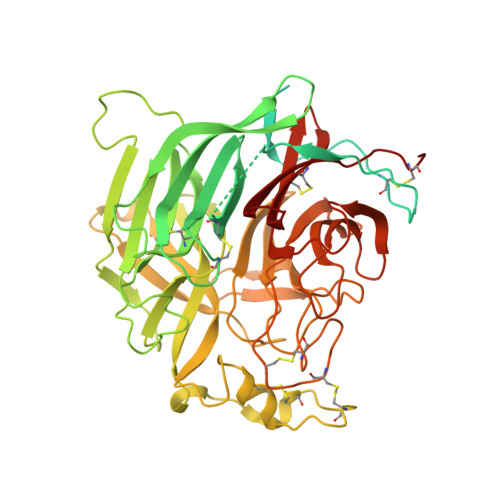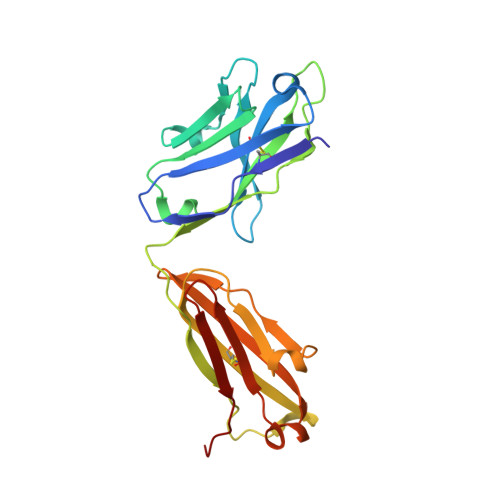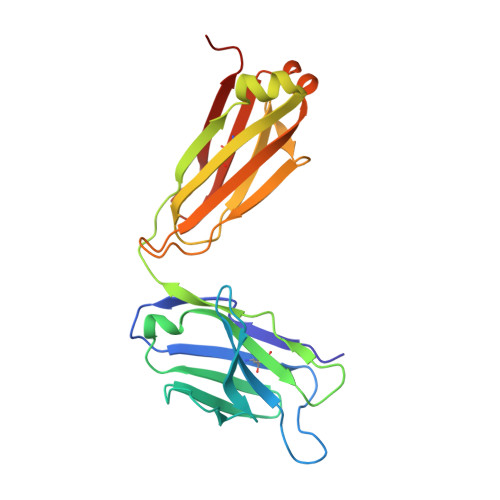Potent monoclonal antibody-mediated neutralization of a divergent Hendra virus variant.
Wang, Z., Dang, H.V., Amaya, M., Xu, Y., Yin, R., Yan, L., Hickey, A.C., Annand, E.J., Horsburgh, B.A., Reid, P.A., Smith, I., Eden, J.S., Xu, K., Broder, C.C., Veesler, D.(2022) Proc Natl Acad Sci U S A 119: e2122769119-e2122769119
- PubMed: 35617431
- DOI: https://doi.org/10.1073/pnas.2122769119
- Primary Citation of Related Structures:
7SYY, 7SYZ - PubMed Abstract:
Hendra virus (HeV) and Nipah virus (NiV) are deadly zoonotic Henipaviruses (HNVs) responsible for recurrent outbreaks in humans and domestic species of highly fatal (50 to 95%) disease. A HeV variant (HeV-g2) of unprecedented genetic divergence has been identified in two fatally diseased horses, and in two flying fox species in regions of Australia not previously considered at risk for HeV spillover. Given the HeV-g2 divergence from HeV while retaining equivalent pathogenicity and spillover potential, understanding receptor usage and antigenic properties is urgently required to guide One Health biosecurity. Here, we show that the HeV-g2 G glycoprotein shares a conserved receptor tropism with prototypic HeV and that a panel of monoclonal antibodies recognizing the G and F glycoproteins potently neutralizes HeV-g2– and HeV G/F–mediated entry into cells. We determined a crystal structure of the Fab fragment of the hAH1.3 antibody bound to the HeV G head domain, revealing an antigenic site associated with potent cross-neutralization of both HeV-g2 and HeV. Structure-guided formulation of a tetravalent monoclonal antibody (mAb) mixture, targeting four distinct G head antigenic sites, results in potent neutralization of HeV and HeV-g2 and delineates a path forward for implementing multivalent mAb combinations for postexposure treatment of HNV infections.
Organizational Affiliation:
Department of Biochemistry, University of Washington, Seattle, WA 98195.






















